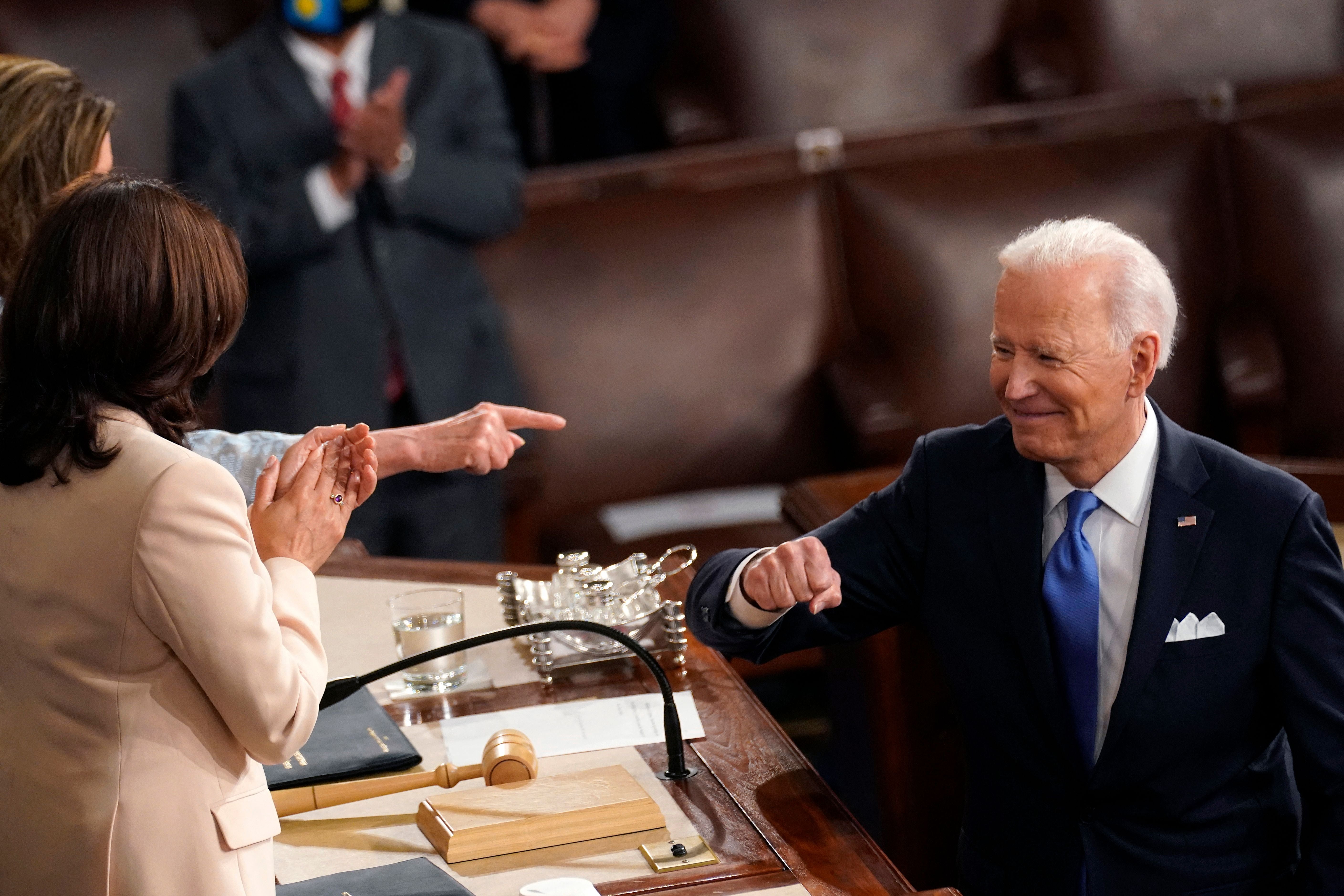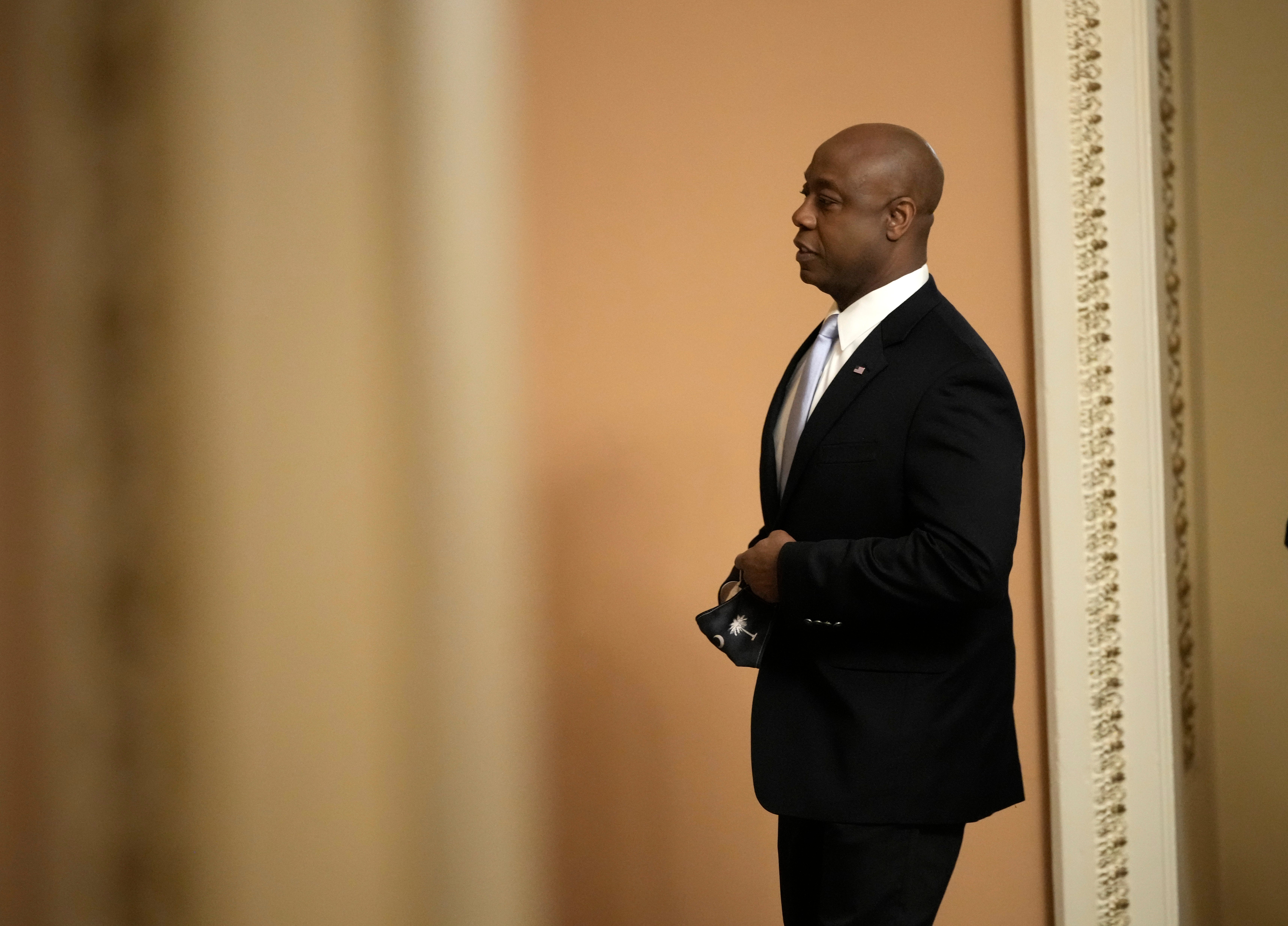How Joe Biden’s first joint session speech compared to Trump’s – and what it could mean for his presidency
Analysis: President’s supporters believe he could be most impactful leader in generations, writes Andrew Buncombe


Your support helps us to tell the story
From reproductive rights to climate change to Big Tech, The Independent is on the ground when the story is developing. Whether it's investigating the financials of Elon Musk's pro-Trump PAC or producing our latest documentary, 'The A Word', which shines a light on the American women fighting for reproductive rights, we know how important it is to parse out the facts from the messaging.
At such a critical moment in US history, we need reporters on the ground. Your donation allows us to keep sending journalists to speak to both sides of the story.
The Independent is trusted by Americans across the entire political spectrum. And unlike many other quality news outlets, we choose not to lock Americans out of our reporting and analysis with paywalls. We believe quality journalism should be available to everyone, paid for by those who can afford it.
Your support makes all the difference.Cast your mind back if you will, to another American president making his first address to a joint session amid a time of intense anxiety.
“I am here tonight to deliver a message of unity and strength, and it is a message deeply delivered from my heart,” he said.
That was, of course, Donald Trump, speaking with his eye unusually fixed to the teleprompter, on the last day of February in 2017, just five weeks into his presidency. For many in the country, the consternation had been created by everything Trump had done in those five weeks, tearing up presidential norms with abandon, and roaring at his critics.
It feels strange now, to recall even the New York Times suggested the speech might mark the beginning of a permanent shift in tone and style, with one headline asking “Which Donald Trump is real”?
No such questions need be asked about Joe Biden, also delivering his first address to a joint session of Congress - a president’s first such speech is not, for some reason, called a State of the Union - amid a time of turmoil and worry.
The man we saw on display on Wednesday night was very much the individual we have seen all these years since he was first elected to the Senate in 1972 - not a great speaker, in truth sometimes with a habit of going on a bit, but seemingly authentic, and with his heart on his sleeve.
In a delivery that felt like many of the live-streamed addresses from his Delaware basement during the election campaign, albeit with a grander backdrop, Biden’s calm consistency will have been a comfort for many, even as the nation emerges from a pandemic that has infected 32 million Americans and killed at least 574,000.
Yet, if the style was the same old “sleepy Joe” that Trump used to mock, the programmes he championed as he spoke to the nation were anything but. Having already signed into law a $1.9 trillion Covid relief package, and unveiled a $2.3 trillion American Jobs Plan at the end of March, the government on Wednesday released details of a third massive measure, the American Families Plan, containing $1.8 trillion worth of spending increases and tax cuts aimed to make it easier for people to get educated, reduce the cost of child care and support more women in the workforce.
“We are on track to cut child poverty in America in half this year,” he said.
Among the most notable steps Trump took in his first 100 days were to force through a Muslim travel ban by executive order, tighten immigration controls and reduce environmental protections enacted by Barack Obama.
By contrast, in addition to the spending plans, Biden has already rejoined the Paris Accord on climate, led a global summit seeking to cut carbon emissions, and indicated a willingness to negotiate with Iran.
And, of crucial importance to so many Americans, Biden has overseen an operation that has resulted in 220m vaccine shots being injected into arms since he took office, more than double the 100m he had vowed.

Another major difference is that whereas at this point in his presidency Donald Trump had one of the lowest approval ratings of modern leaders, just 41 per cent according to Gallup, Biden’s stands at 57 per cent. The pollster noted Obama’s stood at 63, while the average for the occupant of the Oval Office at this stage is 53.
Despite the anticipation in some quarters that Trump’s speech to the joint session of Congress in 2017 would mark a pivot to a more moderate, Reagan-like leadership, it never did. He might have claimed a “new chapter of American greatness is now beginning - a new national pride is sweeping across our nation” - but he did not seek to change his stripes. If anything, he doubled down efforts to please and placate the unshifting 41 per cent of support he believed could win him a second term.
Very quickly he was firing the likes of James Comey, insulting America’s Nato allies, and using social media to denounce and insult those he disliked, in a way that back then still felt shocking.
And for all of Trump’s promise of action, he essentially only oversaw one major piece of legislation, a huge tax cut that gave massive breaks to corporations and the wealthy, but not working Americans. On healthcare and infrastructure he talked much, but delivered little.

If such speeches are an indicator of what is to come, Biden’s supporters must be hoping for more of the same. The centrist, no-frills campaigner of 2020 is now sitting astride spending plans and programmes that if passed would mark the greatest social investment by a US government since the 1930s.
“America is an idea – unique in the world,” he said at one point. “We are all created equal. It’s who we are. We cannot walk away from that principle.”
As it was, the House of Representatives where Biden spoke to a Covid-safe guest-list of just 200 members of Congress and others, was already filled with images of change - a Black female vice president fist-bumping with a female speaker, a Black secretary of defence, a speech that talked of equity for members of the LGBTQ community, and of finally negotiating with drug companies to lower the price of prescription medicine.
Can Biden pull off everything he is seeking to do?
We know the challenge he is going to have in winning over enough Republican members of the Senate for some of his spending bills, even though Democrats narrowly hold the majority. It may be that the headline numbers do not make it into the actual bills that are passed.
But for all his talk of a desire to seek consensus and agreement as he governs, he also knows many presidents that enter office with their party controlling both chambers of Congress, usually lose one of them during the next midterm elections.
With that in mind, Biden, the man who secured the presidency on his third attempt, is likely to be tempted to go as big as possible in these first two years.
His supporters, especially those progressives who were ready to write off Biden as too old, too dull and too unimaginative as a candidate, are surely hoping for such action.
Biden delivered his speech just three months after supporters of Donald Trump stormed the US Capitol and entered the chamber where he was standing, in an effort to stop the ratification of his electoral college votes. Almost 120 Republicans voted against doing so, including minority leader Kevin McCarthy, who was present on Wednesday.
Biden nodded towards that event as he concluded his remarks.
“I stand here tonight before you in a new and vital hour in the life of our democracy and our nation,” he said. “And I can say with absolute confidence: I have never been more confident or more optimistic about America.”
Join our commenting forum
Join thought-provoking conversations, follow other Independent readers and see their replies
Comments